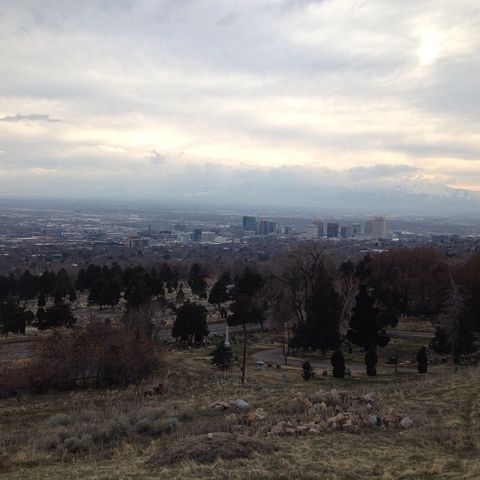Ralph Waldo Emerson once said that “few people know how to take a walk.”
Most of us take walking for granted. In fact, I believe there’s a growing movement to get rid of walking altogether. The prevalence of cars, buses, trams and bikes have reduced the need to walk. More to the point: We feel the need to justify walking altogether. Any instance of walking must be accompanied by some kind of crutch — we need to walk with others, listen to music or find another way to make it productive. We walk to satisfy our Fitbit or step counters so at the end of the day we can look at our badge of honor that says we took 5,000 steps. We’ve convinced ourselves it’s wearisome, that it’s a form of procrastination that takes time out of our too-busy schedules. We treat it as if it’s wasteful.
What we forget is that aspects of walking are helpful and necessary. I find it one of the best ways to wake myself up without coffee or some other stimulant. For 7 a.m. classes it’s much easier to prep by walking to class than by rushing onto a bus with coffee in hand. It’s also a great de-stresser. No better way to rest and simultaneously absorb the material than by walking around after class has ended. It’s one of the best ways to clear your head and such a simple way to exercise that we don’t overexert ourselves doing it, which means we can do all these things simultaneously. That seems to be, unfortunately, part of the problem. We’ve distracted ourselves so much we’ve forgotten how to walk.
The truth is, walking is an art. It takes skill to walk, just as it takes skill to go hiking or rock climbing. Think about it like this: Why do people hike? When they’re done, do they talk about how exhausted they were and justify the hike as exercise? Some first-timers might, but for regular hikers this is hardly the case. People hike because there’s something beautiful and joyous about it, whether for the beauty of the scenery or an uplifting feeling in the body.
It does take practice. You shouldn’t hike to the top of Angel’s Landing and expect to be awed and encumbered by the scene. You’ll likely feel exasperated, irritated and, quite frankly, too relieved to be resting to feel the “runner’s high” such exertions usually afford. Walking is the same way.
I remember feeling completely exhausted every day my first semester from having to repeatedly walk up and down campus to get to my classes. While I did this mostly because I didn’t know which buses to take, it paid off tremendously. You build up a tolerance, and it becomes as natural as breathing. Walking turns into a sort of meditation. It’s a way to exercise while relaxing, like winding yourself up while you’re winding down.
Part of the problem is that for many of us living in suburbia, there isn’t anywhere to walk to. That’s why I think Salt Lake City is such a treat for walkers and why walking is the greatest benefit of living on campus. Salt Lake City is somewhat unique compared to the rest of Utah — it has an amazing number of roads. Its grid structure allows for so many different streets, you could walk three hours every day and still explore a different route each time. Walking provides a visual treat so easily missed when driving through the city. I personally feel that Salt Lake looks just as boring in postcards as it does behind a steering wheel. It looks like a dull, empty city with brown buildings that aren’t even skyscrapers. We’re not used to paying attention to things while we drive. Why bother when the thing whizzes by in less than a matter of seconds? Walking around gives the city a completely different feel. Most of its beauty lays hidden in corners you’d pass in a car or a bus or a train.
But you shouldn’t only check out the city. Walk through the neighborhoods too. Notice the architecture of each house, the level of detail some people put into their gardens or the abandoned landscape of untouched front yards.
The basic rule to follow is to not worry about where you’re going. The easiest way to avoid this is to pick a random direction and start walking. Walk and walk and walk for an hour or three, then either turn around and go back or get a ride. Use buses and the grid layout to your advantage.
To complete Emerson’s quote, “The qualifications are endurance, plain clothes, old shoes, an eye for nature, good humor, vast curiosity, good speech, good silence and nothing too much.”


